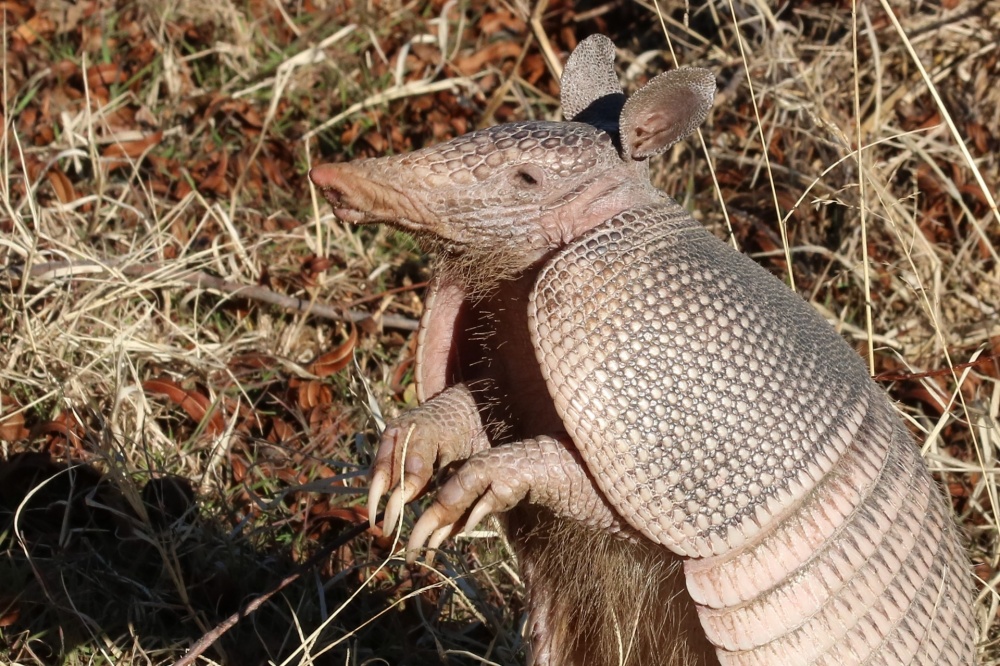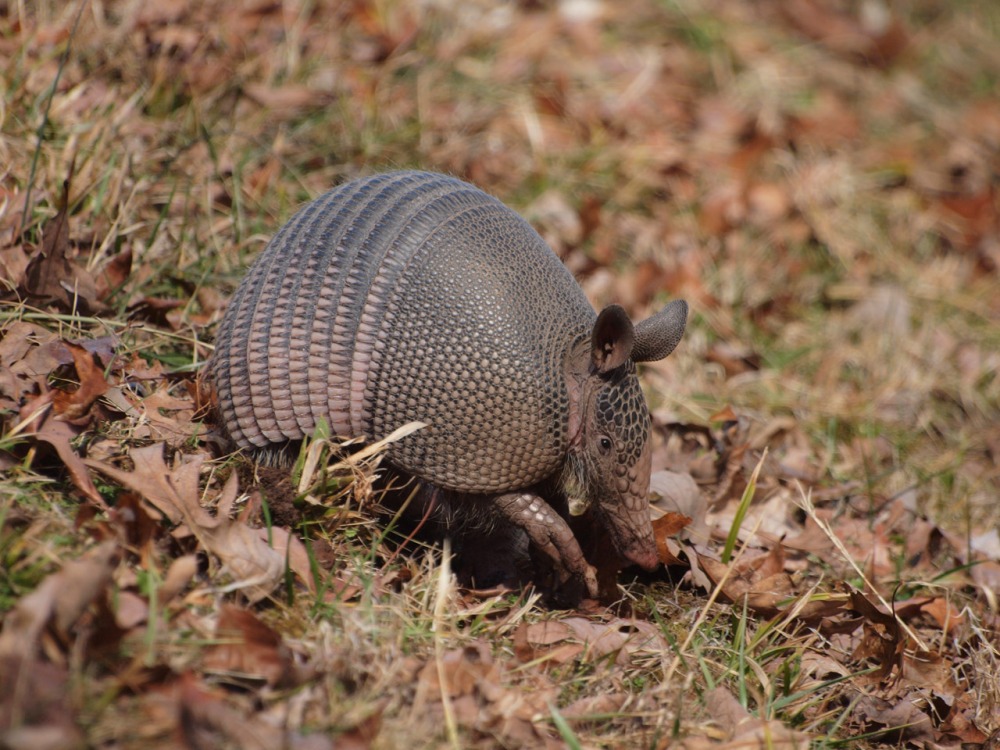Throughout our history Myaamia people have constantly encountered animals that were new to us and created words to talk about those animals. In the late 1800s, many Myaamia people lived around and worked within the circuses that wintered near Iihkipisiononki ‘Peru, Indiana’ and created new names or repurposed old names for the animals they found there. Examples like waapinkwilookia ‘elephant,’ eelaalaahšiwia ‘monkey,’ and kinoosaawia ‘lion’ come out of these circus experiences.
Myaamia people continue to encounter new animals through travel or visiting places like zoos. Additionally, the environment around us continues to shift and this brings new animals into parts of Myaamionki where they’ve never lived before. This is the case with koohkoošhkinaahkwa ‘armadillo.’

Photo by Sheila Brown
The Nine-banded armadillo (Dasypus novemcinctus) did not originally live in Noošonke Siipionki Myaamionki ‘Myaamia lands in the Neosho River Valley.’ The animal prefers to avoid the harsh cold of winters due to its lack of body hair and low body temperature. However, as winters have grown less harsh over the last decades, the armadillo has begun to migrate into our homelands around Miami, Oklahoma.
Encountering armadillos on tribal properties in Noošonke Siipionki has led us to have a need to talk about them in Myaamiaataweenki. We asked for help from our friends and relatives with knowledge of related languages – Kickapoo, Meskwaki, and Shawnee – and received examples of how they named armadillos in their languages. Using these examples and evidence gathered from within our language, the team came up with the term koohkoošhkinaahkwa. This word breaks into two parts:
koohkooš – ‘pig’
-ihkinaahkwa – ‘turtle’
The figurative meaning of koohkoošhkinaahkwa is something like ‘the pig-turtle animal.’

Photo by James Hawkins
The next time you see an armadillo you can say “waapami koohkoošhkinaahkwa niiya!” ‘look, there’s an armadillo!’ Or perhaps more commonly, “waapami! miiyonki neepiki koohkoošhkinaahkwa!” ‘Look! A dead armadillo on the road!”